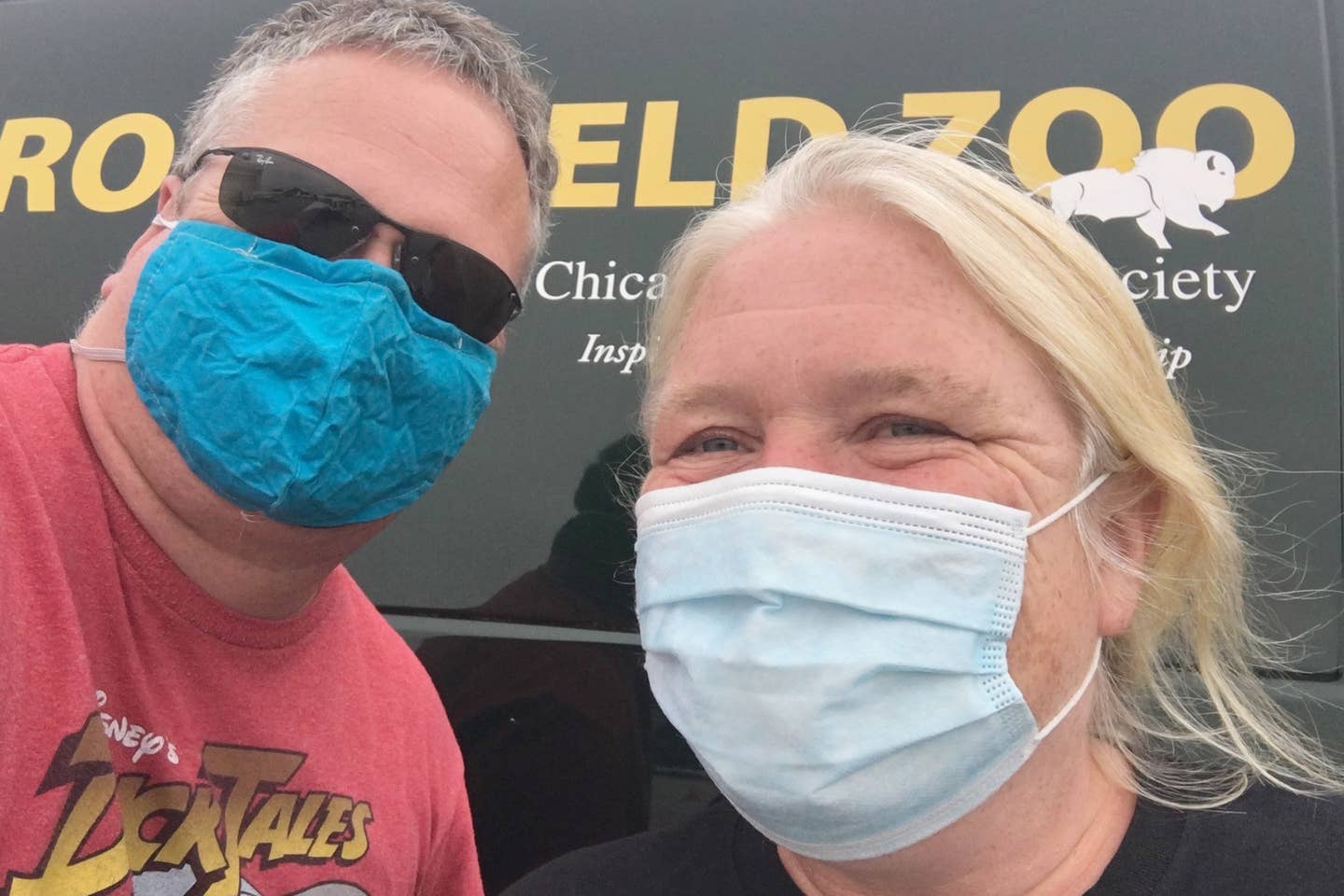
Pilots Brenda Tibbs and Timothy Lanigan flew the Tecnam P2006T down to Florida to pick up Pistachio and take her to Chicago. Courtesy Turtles Fly Too
Many pilots have donated their time and efforts—and hearts—to flying animal rescue missions. Most of those involve furry friends that we’re most familiar with, the dogs and cats that need to make it from an animal shelter in one region to a foster or forever home in another. But a myriad of endangered species need the advantages of flight as well—and one group, Turtles Fly Too!—has found a niche in providing this specialized aerial transport for a wide range of creatures.
Most recently, a rescued and rehabilitated female Kemp’s sea turtle, Pistachio, needed to move from her temporary home at The Florida Aquarium, to the Chicago Zoological Society’s Brookfield Zoo. Pistachio had been rescued off the coast of Cedar Key, Florida, following a boat strike in 2012. The ultimate mission of the aquarium and the Florida Fish and Wildlife Conservation Commission is to eventually return animals to the wild—but the damage to her carapace (top shell) and skull left her with partial blindness in one eye, and partial rear flipper paralysis, among other issues—so she was deemed a poor candidate for survival if she returned to her ocean home.
Enter the Brookfield Zoo, which offered a permanent place for Pistachio—she just needed a safe way to get there. That’s where Turtles Fly Too, and pilot Brenda Tibbs came into the plan. Tibbs, owner of Bravo Flight Training, in Frederick, Maryland, joined up with co-pilot Timothy Lanigan, and on September 9 they flew the school’s Tecnam P2006T twin from Tampa International (KTPA) to Chicago Midway (KMDW), where caregivers from the zoo met the special flight. Total flight time was seven hours—which compares favorably with the 17 hours that ground transportation would have required, whether you’re a human or a turtle.
Tibbs, member of The Ninety-Nines International Organization of Women Pilots has been interested in wildlife conservation and preservation since a young age, and she’s been in contact with Turtles Fly Too for several years, waiting for the opportunity to fly a mission. “The right one came up,” she said in an interview with Flying. “Everything fell into place.”
Pistachio is a typical Kemp’s sea turtle, about 1.5 feet in length and weighing about 35 pounds—making her fairly well-contained cargo. However, the flight required the airplane to accommodate her traveling kit—a plastic tub with a blanket and a latching top. Her shell was coated with Vaseline prior to her transportation to help keep her hydrated, and Tibbs misted her periodically during the flight, and at stops along the way at Cherokee County Regional Airport (KCNI) in Canton, Georgia, and Purdue University Airport (KLAF), in West Lafayette, Indiana. The last stop was made in anticipation of possible weather delays going into Midway—though Tibbs said they were able to get cleared according to their initial flight plan. Tibbs said that on one of the descents, Pistachio clearly “got annoyed” and starting shifting around enough that they could feel her movements up front. Fortunately, she stayed securely and safely in her box.
When Pistachio arrived at the Brookfield Zoo on that afternoon, Chicago Zoological Society veterinary staff conducted a wellness exam, including a CT scan, on the turtle at the zoo’s Animal Hospital. “Animal care staff then brought her to The Living Coast where she was placed in her new home—a 36,000-gallon habitat,” according to a press release from Turtles Fly Too. “Due to the pandemic all indoor buildings at Brookfield Zoo are currently closed. Although guests are not able to see Pistachio in person, once she gets acclimated to her new home, a member of the animal care staff will introduce Pistachio during a special “Bringing the Zoo to You” Facebook Live chat in late September.”

Subscribe to Our Newsletter
Get the latest FLYING stories delivered directly to your inbox






